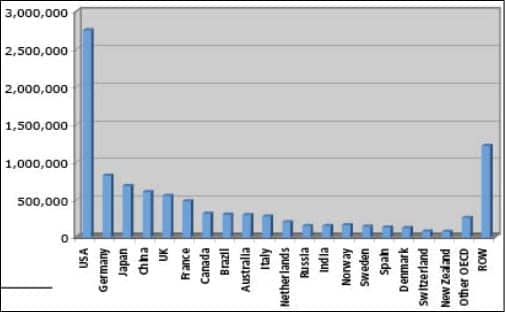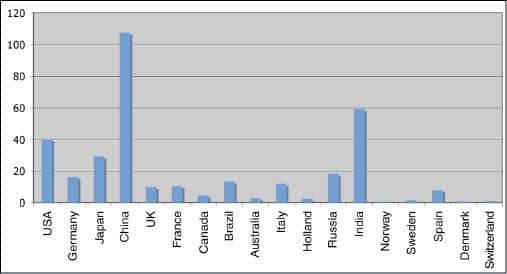By Karl Strom, Editor-in-Chief

1/3, 1/3, 1/3. The world market for hearing aids is probably just over 10 million units. In simplistic terms, it is fairly evenly split three ways between the United States and Canada (about 31% of the world hearing aid market by units), Europe (38%), and Asia and the Pacific Rim (22%) as well as the rest of the world (9%).
Figure 1 shows net unit hearing aid sales estimates for the top-18 dispensing countries. Not surprisingly, those countries with the highest hearing aid sales are those with more established economies, like those belonging to the Organization for Economic Cooperation and Development (and often with generous public subsidies for health care), and those with large populations of seniors. The United States, with sales of more than 2.8 million hearing aids in 2012 (28% of the world market), dwarfs the next-largest countries of Germany and Japan—two of the world’s fastest-aging populations—which make up over 8% and 7% of worldwide hearing aid sales, respectively. HR estimates that China is now the 4th-largest country in terms of hearing aid unit volume, but admittedly it’s very difficult to get any solid market numbers on how many hearing aids are sold there. Like Germany and Japan, China also has a burgeoning population of seniors (Figure 2) and the country almost certainly will become the largest consumer of hearing aids in the decades to come.
Market growth. The world hearing aid market is currently growing at an annual rate of about 3% to 4% by units. The United States saw a net unit volume increase of 2.9% in 2012, according to the Hearing Industries Association (HIA), which is right in the middle of the 2-4% rate of growth it has experienced during the last 10 years (see my article on state-by-state and national unit growth in last month’s HR, pages 34-42).
The economic slowdown, subsidy changes in Norway and Switzerland, and waning consumer confidence are thought to have negatively influenced European sales last year, as the continent saw a net unit increase of about 2%, which is slightly less than its historical growth rate. With far lower rates of market penetration, India, Japan and much of East Asia look to be ripe areas for hearing aid sales growth, although the customer satisfaction rates with hearing aids in Japan appear to be dismally low (see Hougaard et al).







